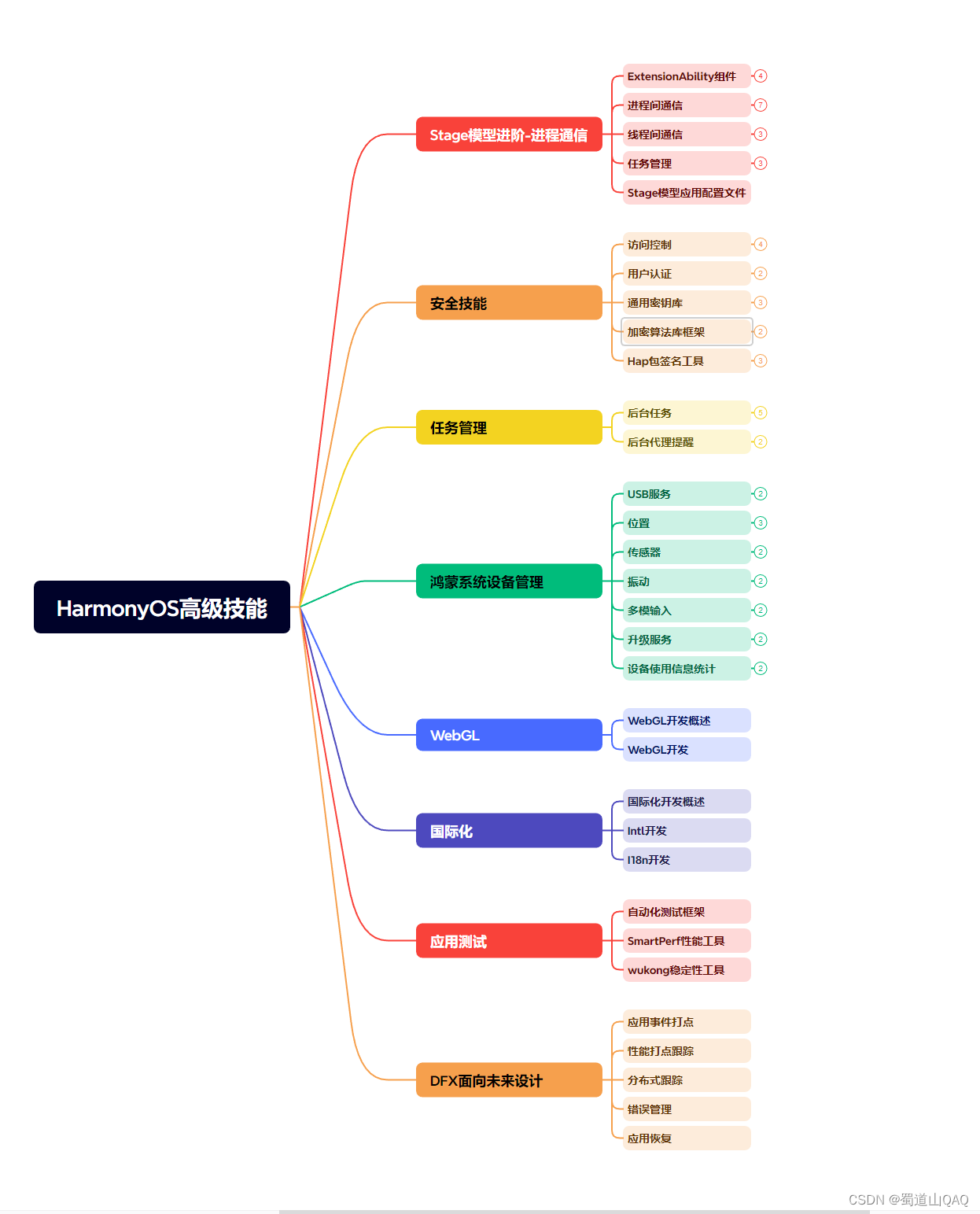使用 HashSet 类型需要导入 collection 包:
import std.collection.*我们可以使用 HashSet 类型来构造只拥有不重复元素的 Collection。
仓颉使用 HashSet<T> 表示 HashSet 类型,T 表示 HashSet 的元素类型,T 必须是实现了 Hashable 和 Equatable<T> 接口的类型,例如数值或 String。
var a: HashSet<Int64> = ... // HashSet whose element type is Int64
var b: HashSet<String> = ... // HashSet whose element type is String元素类型不相同的 HashSet 是不相同的类型,所以它们之间不可以互相赋值。
因此以下例子是不合法的。
b = a // Type mismatch仓颉中可以使用构造函数的方式构造一个指定的 HashSet。
let a = HashSet<String>() // Created an empty HashSet whose element type is String
let b = HashSet<String>(100) // Created a HashSet whose capacity is 100
let c = HashSet<Int64>([0, 1, 2]) // Created a HashSet whose element type is Int64, containing elements 0, 1, 2
let d = HashSet<Int64>(c) // Use another Collection to initialize a HashSet
let e = HashSet<Int64>(10, {x: Int64 => (x * x)}) // Created a HashSet whose element type is Int64 and size is 10. All elements are initialized by specified rule function访问 HashSet 成员
当我们需要对 HashSet 的所有元素进行访问时,可以使用 for-in 循环遍历 HashSet 的所有元素。
需要注意的是,HashSet 并不保证按插入元素的顺序排列,因此遍历的顺序和插入的顺序可能不同。
import std.collection.*
main() {
let mySet = HashSet<Int64>([0, 1, 2])
for (i in mySet) {
println("The element is ${i}")
}
}编译并执行上面的代码,有可能会输出:
The element is 0
The element is 1
The element is 2当我们需要知道某个 HashSet 包含的元素个数时,可以使用 size 属性获得对应信息。
import std.collection.*
main() {
let mySet = HashSet<Int64>([0, 1, 2])
if (mySet.size == 0) {
println("This is an empty hashset")
} else {
println("The size of hashset is ${mySet.size}")
}
}编译并执行上面的代码,会输出:
The size of hashset is 3当我们想判断某个元素是否被包含在某个 HashSet 中时,可以使用 contains 函数。如果该元素存在会返回 true,否则返回 false。
let mySet = HashSet<Int64>([0, 1, 2])
let a = mySet.contains(0) // a == true
let b = mySet.contains(-1) // b == false修改 HashSet
HashSet 是一种可变的引用类型,HashSet 类型提供了添加元素、删除元素的功能。
HashSet 的可变性是一个非常有用的特征,我们可以让同一个 HashSet 实例的所有引用都共享同样的元素,并且对它们统一进行修改。
如果需要将单个元素添加到 HashSet 的末尾,请使用 put 函数。如果希望同时添加多个元素,可以使用 putAll 函数,这个函数可以接受另一个相同元素类型的 Collection 类型(例如 Array)。当元素不存在时,put 函数会执行添加的操作,当 HashSet 中存在相同元素时,put 函数将不会有效果。
let mySet = HashSet<Int64>()
mySet.put(0) // mySet contains elements 0
mySet.put(0) // mySet contains elements 0
mySet.put(1) // mySet contains elements 0, 1
let li = [2, 3]
mySet.putAll(li) // mySet contains elements 0, 1, 2, 3HashSet 是引用类型,HashSet 在作为表达式使用时不会拷贝副本,同一个 HashSet 实例的所有引用都会共享同样的数据。
因此对 HashSet 元素的修改会影响到该实例的所有引用。
let set1 = HashSet<Int64>([0, 1, 2])
let set2 = set1
set2.put(3)
// set1 contains elements 0, 1, 2, 3
// set2 contains elements 0, 1, 2, 3从 HashSet 中删除元素,可以使用 remove 函数,需要指定删除的元素。
let mySet = HashSet<Int64>([0, 1, 2, 3])
mySet.remove(1) // mySet contains elements 0, 2, 3最后
有很多小伙伴不知道学习哪些鸿蒙开发技术?不知道需要重点掌握哪些鸿蒙应用开发知识点?而且学习时频繁踩坑,最终浪费大量时间。所以有一份实用的鸿蒙(HarmonyOS NEXT)资料用来跟着学习是非常有必要的。
这份鸿蒙(HarmonyOS NEXT)资料包含了鸿蒙开发必掌握的核心知识要点,
内容包含了:(ArkTS、ArkUI开发组件、Stage模型、多端部署、分布式应用开发、音频、视频、WebGL、OpenHarmony多媒体技术、Napi组件、OpenHarmony内核、OpenHarmony南向开发、鸿蒙项目实战等等)鸿蒙(HarmonyOS NEXT)技术知识点。
希望这一份鸿蒙学习资料能够给大家带来帮助,有需要的小伙伴自行领取,限时开源,先到先得~无套路领取!!
如果你是一名有经验的资深Android移动开发、Java开发、前端开发、对鸿蒙感兴趣以及转行人员,可以直接领取这份资料
获取这份完整版高清学习路线,请点击关注 → 公众皓 :【蜀道衫】即可领取
鸿蒙(HarmonyOS NEXT)最新学习路线

-
HarmonOS基础技能

- HarmonOS就业必备技能

- HarmonOS多媒体技术

- 鸿蒙NaPi组件进阶

- HarmonOS高级技能

- 初识HarmonOS内核

- 实战就业级设备开发

有了路线图,怎么能没有学习资料呢,小编也准备了一份联合鸿蒙官方发布笔记整理收纳的一套系统性的鸿蒙(OpenHarmony )学习手册(共计1236页)与鸿蒙(OpenHarmony )开发入门教学视频,内容包含:ArkTS、ArkUI、Web开发、应用模型、资源分类…等知识点。
获取以上完整版高清学习路线, 请点击关注 → 公众皓 :【蜀道衫】即可领取
《鸿蒙 (OpenHarmony)开发入门教学视频》

《鸿蒙生态应用开发V2.0白皮书》

《鸿蒙 (OpenHarmony)开发基础到实战手册》
OpenHarmony北向、南向开发环境搭建

《鸿蒙开发基础》
- ArkTS语言
- 安装DevEco Studio
- 运用你的第一个ArkTS应用
- ArkUI声明式UI开发
- .……

《鸿蒙开发进阶》
- Stage模型入门
- 网络管理
- 数据管理
- 电话服务
- 分布式应用开发
- 通知与窗口管理
- 多媒体技术
- 安全技能
- 任务管理
- WebGL
- 国际化开发
- 应用测试
- DFX面向未来设计
- 鸿蒙系统移植和裁剪定制
- ……

《鸿蒙进阶实战》
- ArkTS实践
- UIAbility应用
- 网络案例
- ……

总结
总的来说,华为鸿蒙不再兼容安卓,对中年程序员来说是一个挑战,也是一个机会。只有积极应对变化,不断学习和提升自己,他们才能在这个变革的时代中立于不败之地。
看完三件事❤️
- 如果你觉得这篇内容对你还蛮有帮助,我想邀请你帮我三个小忙:
- 点赞,转发,有你们的 『点赞和评论』,才是我创造的动力。
- 关注作者公众皓 『 蜀道衫 』,不定期分享原创知识。
- 关注后回复【666】扫码即可获取学习资料包。
- 同时可以期待后续文章ing🚀。
























 2616
2616

 被折叠的 条评论
为什么被折叠?
被折叠的 条评论
为什么被折叠?








